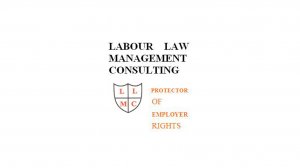We have received countless calls from readers asking about the meaning of legal terms found in the Labour Relations Act (LRA) Employment Equity Act (EEA), other statutes and in case law. The volume of such requests is not surprising because:
- There are numerous legal terms in labour law that are confusing, unclear, ambiguous and vague
- Many of these terms are undefined in the LRA and EEA despite the fact that these acts have Definitions sections
- Those terms that are defined in the statutes are sometimes still confusing because the definition is incomplete or unclear and therefore open to interpretation
- Court judges and arbitrators, via their judgements and awards, quite often disagree with each other on the meaning of certain terms and as to how they should be applied
- In the light (or is it the dark?) of these legal uncertainties employers, employees and trade unions struggle to understand and agree on the requirements of the law because the meaning of the law is itself a reason for dispute. In practical terms, when labour law is unclear, then employers are unsure of how they should act when legal steps need to be taken and employees are unsure what workplace rights they have and how far their rights extend.
The legal terms and concepts that appear to confuse employers and employees include, amongst many others, the following:
Victimisation, reasonable, sufficient, con-arb, unfair dismissal, evidence, going concern, racial abuse, sexual discrimination, accumulated leave, consultation, automatically unfair, desertion and reinstatement.
Over the next few weeks I will discuss these elusive terms so as to bring light into the labour law gloom.
VICTIMISATION
Labour legislation avoids dealing directly with the concept of ‘workplace victimisation’. I have been unable to find this term mentioned anywhere in the LRA. This is most surprising in view of the fact that one of the key purposes of the LRA is to give effect to the Constitutional provision for the right to fair labour practice.
The LRA does, to an extent, deal with the issue of victimisation in an indirect way. For example, sections 5, 185 and 186(2) of the LRA deal with certain unfair practices (short of dismissal) that could amount to victimisation. And chapter 2 of the EEA also alludes to practices that could constitute victimisation. These sections attempt to define and prohibit the following acts on the part of employers:
- Preventing employees or job applicants from joining trade unions or carrying out lawful trade union activities; Bribing employees or prejudicing them so as to avoid or halt their lawful trade union activity or to disadvantage employees/applicants due to past trade union involvement;
- Prejudice an employee or job applicant due to his/her legitimate disclosure of information;
- Prejudice and employee or job applicant who has previously or who may exercise any right conferred by the LRA;
- Bribe any job applicant not to exercise any right conferred by the LRA;
- Unfair promotion, demotion, suspension, discipline, training or provision of benefits
- Unfair conduct on the employer’s part relation to probation or contravention of the Protection of Disclosures Act 26 of 2000.
- Unfair discrimination and harassment.
While labour law does, as outlined above, deal with many types of employee mistreatment that could constitute ‘victimisation’ there are a number of large gaps in the LRA and EEA. For instance, these acts do not specifically prohibit an employer from shouting at assaulting or making unfair threats against an employee. The acts also do not specifically prohibit the employer from moving the employee out of his/her office into a draughty passage or from transferring the employee from location to location purely in order to coerce the employee into resigning. Section 186(e) does consider a forced resignation as a dismissal but this does not help an employee who cannot afford to resign in order to avoid victimisation.
Next time I will discuss the hidden hazards for employers who engage in victimisation of employees.
Written by lvan lsraelstam, Chief Executive of Labour Law Management Consulting. He may be contacted on 0828522973 or on e-mail address: labourlaw@absamail.co.za.
EMAIL THIS ARTICLE SAVE THIS ARTICLE
To subscribe email subscriptions@creamermedia.co.za or click here
To advertise email advertising@creamermedia.co.za or click here











